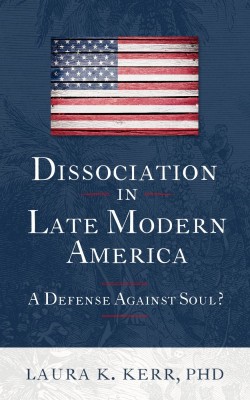I am reading Murray Stein’s wonderful book, Minding the Self: Jungian Meditations on Contemporary Spirituality, after spending the weekend assisting a sensorimotor psychotherapy training.
On first glance, spirituality and neurobiologically-informed psychotherapy might seem to have little in common. However, one of the topics in the sensorimotor psychotherapy training was the model ofstructural dissociation — how the psyche organizes around defense responses and attachment needs following trauma, especially when traumatization has been chronic.
I believe the model of structural dissociation resonates with distinctions between good and evil that CG Jung saw as a central challenge to individuation, the lifelong process of actualizing all aspects of self.
Structural dissociation describes how reminders of past traumatic conditions trigger habitual reactions and beliefs, which become organized around animal defense responses such as fight or flight, along with the need for safe attachments. Of course, we all act differently when we feel threatened from how we act when we feel safe to love. Yet for those who struggle with the aftereffects of trauma, often there are conflicts among “parts,” less control over them, and more reactivity.
For the person experiencing deep rifts within, it is easy to perceive some parts as “evil,” and needing to be pushed away or destroyed, and other parts as “good,” and needing to be protected. Nevertheless, all are parts of the self that at one point contributed to survival, even if they have outgrown their usefulness or have become destructive and a threat.
Similarly, Stein shows that parts of the self, especially those perceived as “warring,” are the focus of both Jungian individuation and a spiritually focused life — at least in modern religions such as Christianity. And like structural dissociation, the goal of individuation (and Christian incarnation) is to become aware of, and reconcile, the splits within:
“Jung recasts the notion of incarnation in a psychological mode as a developmental process in which the unconscious becomes assimilated into consciousness over the period of an individual’s lifetime. He calls this process individuation. For modern men and women, incarnation means entering actively and consciously into the individuation process, which requires enduring the battle of the opposites as they come into play and submitting to the extreme suffering of this conflict as Jesus Christ suffered the cross, a symbol of hanging between the opposites. This suffering for the sake of individuation is for Jung the genuineimitatio Christi, which no longer means becoming Christ-like in the traditional sense of trying to become perfect as Christ was perfect or following his example. Rather, it means enduring the agony of the inner warring opposites until a unifying symbol is born in the individual soul. In other words, each person is required to incarnate the full complexity of the psyche, conscious and unconscious. This is what it means to ‘mind the self’.”
For me, combining spirituality with scientific models is the most humanistic way to approach healing from trauma. Suffering is part of all lives, and our greatest suffering happens when we have been victimized by others. Often this is the first introduction to the distinction between good and evil.
On the one hand, we need methods like psychotherapy (or really, the support of anyone compassionate and knowledgeable about healing the psyche) to find the way back to wholeness, and this is a very practical part of the process of healing. On the other hand, the transformation that happens in the course of integration/individuation often defies words — even as it creates a sense of being deeply connected to humankind, nature, or for some, what Jung identifies as the God-image, which Stein describes as follows:
“A God-image is a numinous symbol derived from the archetypal level of the psyche, which captures and conveys an intuition or feeling of awe-inspiring, absolute, cosmic, eternal Being. Such symbols can lead us directly to an experience of the archetypal world. As symbols, these images communicate and mediate a dimension of Being that lies beyond the ego’s limitations, beyond the confines of humanly-perceivable boundaries of time and space.”
Especially when trauma has been severe or chronic enough to cause deep rifts in the psyche, the survivor must go on a quest of sorts — the so-called journey of the wounded healer — to become whole again. This journey is archetypal. No matter how good our theories and interventions become, or how much we learn about the biological and social underpinnings of trauma, ‘healing’ involves a sense of touching into something grander than oneself, which becomes the model for wholeness.
Perhaps it’s not the flashbacks, the insomnia, the addictions, or the emotional dysregulation that draws us to heal traumatic wounds (although they would be enough!), but rather the deeper, if not archetypal urge to become fully alive.
References
Stein, Murray. 2014. Minding the Self: Jungian Meditations on Contemporary Spirituality. NY, NY: Routledge.
Hart, Onno van der, Ellert R. S. Nijenhuis, and Kathy Steele. 2006. The Haunted Self: Structural Dissociation and the Treatment of Chronic Traumatization. New York: WW Norton & Company.
© 2015 Laura K Kerr, PhD. All rights reserved (applies to writing and photography).
Written By Laura K Kerr, Ph.D
Individuation And The Spiritual Aspects Of Healing Trauma was originally published @ Laura K. Kerr, Ph.D. and has been syndicated with permission.
Sources:
Our authors want to hear from you! Click to leave a comment
Related Posts





